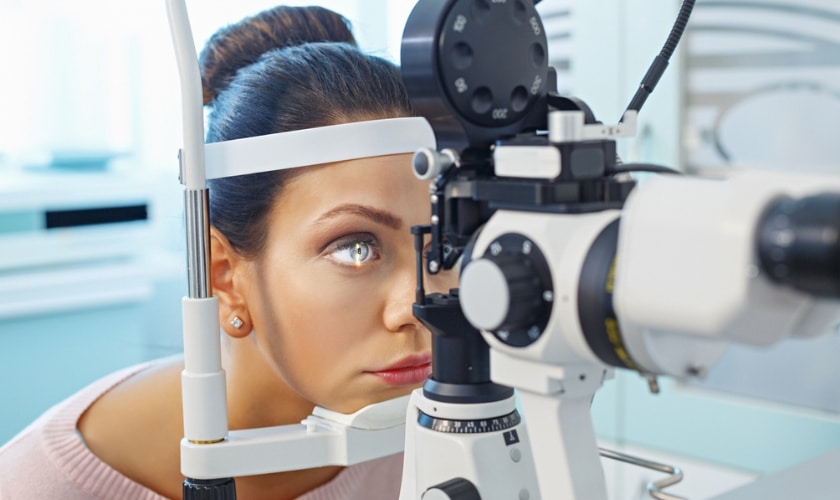Diabetes is a chronic condition affecting millions globally. While it primarily impacts blood sugar management, it can also significantly affect eye health. Diabetics are at an increased risk of developing various eye complications, including diabetic retinopathy, a leading cause of blindness among working-age adults.
Early detection and intervention are crucial for preventing vision loss from diabetic eye diseases. This is where regular eye exams, particularly those specifically designed for diabetics, become vital. While both diabetic and regular eye exams assess overall eye health, there are key differences in their focus and procedures.
The Importance of Regular Eye Exams for Everyone
Regardless of whether you have diabetes, scheduling regular eye exams with your ophthalmologist (eye doctor) is essential. These checkups allow for early detection of a wide range of eye conditions, including:
- Cataracts: A clouding of the lens that can impair vision.
- Glaucoma: A group of eye diseases that damage the optic nerve, potentially leading to vision loss.
- Age-related macular degeneration (AMD): A deterioration of the macula, the central part of the retina responsible for sharp central vision.
- Retinal detachment: A serious condition where the retina separates from the underlying tissue, potentially causing permanent vision loss.
Early detection of these conditions allows for prompt treatment and helps prevent vision loss.
The Standard Eye Exam: A Comprehensive Checkup
A typical eye exam typically involves the following steps:
- Review of medical history: Your ophthalmologist will discuss your overall health, including any medications you take.
- Vision test: This test measures your visual acuity (sharpness) at various distances.
- Refraction test: This test determines your need for corrective lenses like eyeglasses or contact lenses.
- Tonometry: This test measures intraocular pressure (IOP), the pressure inside the eye. Elevated IOP is a risk factor for glaucoma.
- Slit-lamp examination: Using a specialized microscope, your doctor examines the front of your eye, including the cornea, iris, and lens.
- Dilated eye exam: Eye drops are used to widen (dilate) your pupils, allowing your doctor to examine the retina, optic nerve, and other structures at the back of your eye.
The Diabetic Eye Exam: A Deeper Look for Potential Risks
A diabetic eye exam builds upon the foundation of a standard exam, with a specific focus on identifying early signs of diabetic eye complications. Here’s what you can expect:
- Detailed discussion of your diabetes management: Your doctor will ask about your blood sugar control and any diabetes-related complications you may be experiencing.
- Evaluation of your risk factors: Factors such as the duration of your diabetes, blood sugar control, and blood pressure will be assessed to determine your overall risk of developing eye complications.
- Emphasis on retinal health: The dilated eye exam plays a crucial role in diabetic eye exams. Your doctor will meticulously examine the retina for signs of diabetic retinopathy, including microaneurysms (small bulges in blood vessels), bleeding, and fluid leakage.
- Retinal photography: Some doctors may use retinal photography to capture high-resolution images of the retina. These images can be compared in future exams to track any changes and monitor disease progression.
Additional Tests for Diabetic Eye Disease
Depending on your specific situation, your doctor may recommend additional tests to further assess your eye health:
- Fluorescein angiography: A dye is injected into your bloodstream and pictures are taken of your retina as the dye circulates. This test helps identify leaking blood vessels and abnormal blood flow associated with diabetic retinopathy.
- Optical coherence tomography (OCT): This non-invasive imaging technique creates detailed cross-sectional images of the retina, allowing for a more precise evaluation of retinal layers and potential damage.
Frequency of Eye Exams for Diabetics
The recommended frequency of eye exams for diabetics varies based on the type of diabetes, duration of the condition, and individual risk factors. Here’s a general guideline:
- Type 1 diabetics: Annual eye exams are recommended from the time of diagnosis.
- Type 2 diabetics: An eye exam should be performed shortly after diagnosis and then annually thereafter. More frequent exams may be necessary if signs of diabetic retinopathy are detected.
- Diabetics with existing eye problems: More frequent exams, potentially every 3-6 months, may be necessary to monitor disease progression and the effectiveness .
Treatment Options and Maintaining Good Eye Health with Diabetes
Early detection of diabetic eye complications is crucial for preventing vision loss. If your doctor identifies signs of diabetic retinopathy, various treatment options are available:
- Laser surgery: This minimally invasive procedure uses lasers to seal leaking blood vessels and prevent further damage.
- Anti-VEGF injections: These injections target a protein called vascular endothelial growth factor (VEGF), which plays a role in abnormal blood vessel growth associated with diabetic retinopathy. These injections help reduce swelling and prevent further vision loss.
- Vitrectomy: In severe cases, vitrectomy surgery may be necessary. This procedure involves removing vitreous gel, the clear jelly-like substance that fills the center of the eye, if it is clouded by bleeding or scar tissue.
Beyond Exams: Maintaining Good Eye Health with Diabetes
Regular eye exams are crucial for diabetics, but there are additional steps you can take to protect your vision:
- Manage your blood sugar: Maintaining good blood sugar control is the single most important step in preventing diabetic eye complications. Work with your doctor to develop a personalized diabetes management plan that includes diet, exercise, and medication.
- Maintain a healthy weight: Being overweight or obese can increase your risk of developing diabetic eye problems.
- Control your blood pressure: High blood pressure can further damage blood vessels in the eye.
- Quit smoking: Smoking significantly increases your risk of diabetic eye disease and other health complications.
- Eat a healthy diet: A diet rich in fruits, vegetables, and whole grains can promote overall health and eye health.
- Protect your eyes from UV rays: Wear sunglasses that block UVA and UVB rays to shield your eyes from sun damage.
Prioritizing Eye Care for a Brighter Future
Diabetic eye exams are vital for protecting your vision and maintaining good eye health. While they differ slightly from regular eye exams by placing a greater emphasis on detecting diabetic eye complications, both play a crucial role in overall eye care.
By scheduling regular eye exams, prioritizing good blood sugar control, and adopting healthy lifestyle habits, you can significantly reduce your risk of diabetic eye problems and ensure a brighter future for your vision. Remember, early detection and intervention are key! Don’t hesitate to discuss any concerns you have about your eyes with your doctor.


